Losing the center stone of an engagement ring is a common fear among many. Despite efforts to secure the stone, unforeseen circumstances can lead to its unfortunate detachment. If you find yourself wondering why your diamond keeps coming loose, there are several potential reasons.
In some cases, the issue may lie in the craftsmanship of the ring itself. Poor construction or improper setting techniques can contribute to the diamond becoming loose over time. Additionally, a strong impact or accidental damage to the setting can cause the stone to come loose.
However, more often than not, the loss of a diamond can be attributed to general wear and tear on a ring that has not received regular care and maintenance. Over time, the metal prongs that hold the stone in place may weaken or become worn, resulting in a loose setting and increased risk of the diamond becoming dislodged.
In this article, we delve into the various reasons why diamonds are lost from rings and provide helpful tips on how to check if your stone is loose, as well as preventative measures you can take. So, without any further delay, let’s explore these important aspects in detail.
DESIGN YOUR OWN ENGAGEMENT RING: START WITH A SETTING OR START WITH A DIAMOND. IT’S REALLY UP TO YOU!

Common Reasons Why Diamonds Are Lost From Rings
Occasionally, despite our best efforts, diamonds can become dislodged from rings, even with proper care. It’s unfortunate, but it’s a risk that applies to any piece of jewelry.
Here are eight common reasons why diamonds can be lost from rings, which can sometimes overlap:
- Damage to the Ring Setting: Accidental damage to the ring setting, such as bending or breaking of the claws, can result in the loss of a diamond. Thinner claws are more vulnerable to damage over time. Seeking assistance from a professional jeweler for repair work is recommended.
- Damage to the Diamond: While diamonds are one of the hardest substances on Earth, they can still break or chip under sufficient force. If a diamond is broken, it may result in parts of it being lost from the ring. Consulting a qualified jeweler is necessary to replace the stone.
- Worn-Out Ring Setting: Over time, prongs can become worn out, and platinum or gold can thin out. Thin prongs may inadequately secure stones within a ring. Solutions include replacing or repairing prongs or creating complete settings to maintain the original design.
- Loose Diamond: Diamonds can remain loose within prongs for a considerable time without being noticed. As the hardest gemstone, a loose diamond can gradually wear down the setting, causing it to become looser and increasing the risk of loss.
- Incorrect Diamond Size: If the diamond is too small or too large for the ring, it can affect the stone’s security. A diamond that is too small may not be securely held by the prongs, while a diamond that is too large can put excessive stress on the setting and cause damage.
- Resizing: Engagement rings with tension settings are particularly vulnerable when resized. It is crucial to check the setting’s security after resizing to ensure the stone is securely set before returning it to the client.
- Cleaning and Refinishing: Cleaning procedures, such as ultrasonic cleaning or intensive polishing, can occasionally loosen diamonds within the ring setting. Therefore, it is essential to check the setting’s integrity following any cleaning to prevent potential losses. Additionally, accumulated grime within the setting should be removed carefully to avoid loosening the stones.
- Displaced Claw: Prongs can sometimes shift out of place during daily wear, even without physical damage. If the prongs no longer secure the stone properly, there is a risk of losing it. However, noticeable movement of the diamond would typically alert you to the issue.
If any of these situations occur, it’s important not to panic. Instead, consult a professional jeweler to assess the situation and provide the necessary repairs or adjustments.
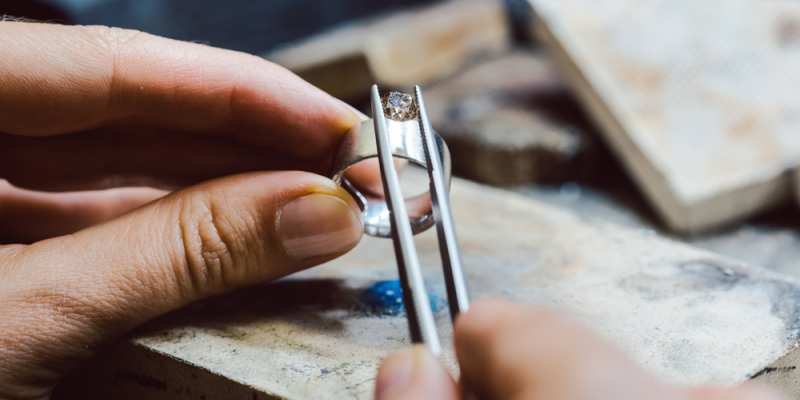
Types Of Settings That Are More Likely To Lose A Diamond
Ring settings that use less durable materials for the prongs are more prone to losing stones as the metal wears down more quickly. Additionally, certain setting styles, like pave settings, carry a higher risk because there is less metal securing the stones.
If your ring has a silver or gold setting, it is advisable to have it regularly inspected by a professional jeweler.
It’s important to keep in mind that with all rings, the prongs will naturally wear down over time, increasing the likelihood of a stone becoming loose or falling out.
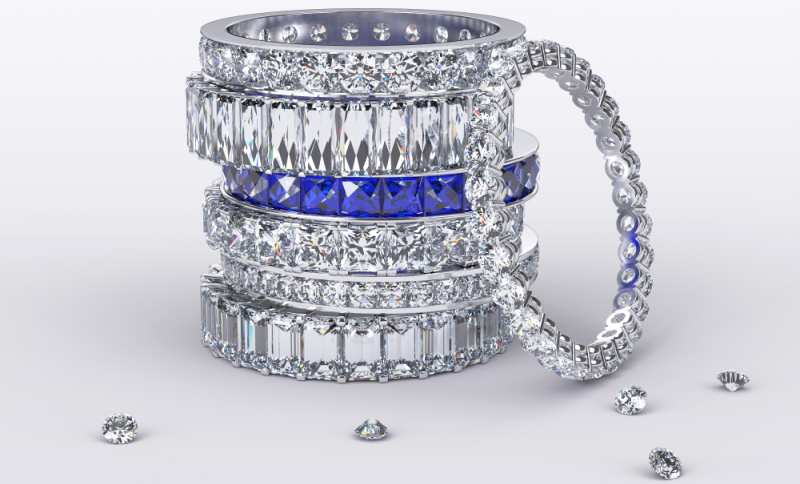
How To Check If A Diamond Is Loose?
There are several methods you can use to check if your diamond is loose and at risk of falling out:
- Tap Test: Hold the side of the band tightly between your fingers and tap the diamond ring close to your ear with the index finger of your other hand. Listen for any rattling sound, as it indicates that the diamond is loose.
- Fingernail Test: Use your fingernail to feel along the girdle of the diamond. Apply gentle pressure and try to push the stone to see if it moves. For round-cut diamonds, check if the stone spins or rotates.
- Light Reflection Test: Position your diamond ring in a way that allows light to reflect clearly off its surface. Use a pair of tweezers to lightly push on the diamond and observe if the reflected light shifts. This method helps to determine if the stone can move within the setting.
- Pin Test: With a pin positioned on the girdle of the diamond, apply gentle pressure and try to move the stone in different directions. Use a magnifying glass to help visualize the position of the pin and any movement caused by it.
By using these methods, you can assess whether your diamond is loose and take appropriate measures to secure it if needed.
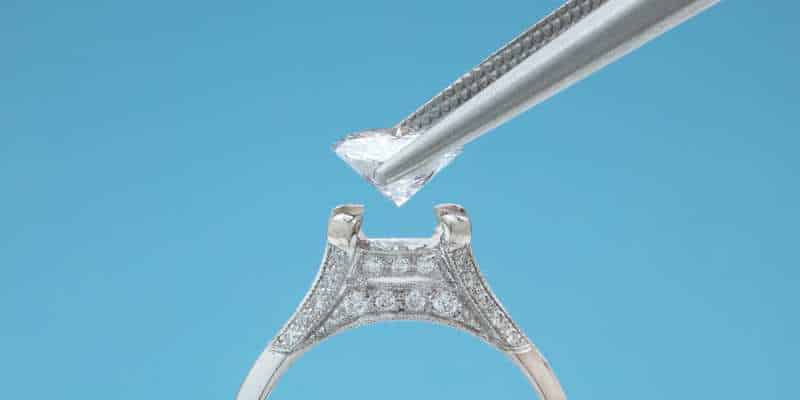
What If Your Diamond Is Loose?
If you observe any movement or hear a rattling sound during the tests, it is a clear indication that your diamond is loose.
In such a situation, it is crucial to stop wearing the ring immediately to prevent the possibility of the stone falling out and getting lost. Place your jewelry in a securely closed box as a precautionary measure.
Next, it is important to take your ring to a reputable jeweler for professional inspection and repair of the setting. It is not advisable to attempt fixing it yourself, as this may void any warranties or insurance policies you have for the diamond.
To minimize the risk of your diamond becoming loose and falling out in the future, it is advisable to remove the ring at certain times, especially during activities that may subject it to excessive force or impact.
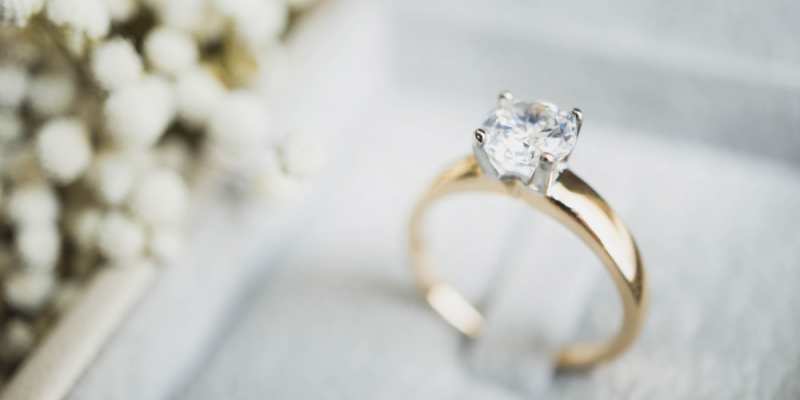
When To Take Off Your Diamond Ring?
Removing your diamond ring not only helps protect the stone from potential damage but also prevents it from getting dirty. Here are instances when it’s advisable to take off your diamond ring to keep it in pristine condition.
- Working Out: Take off your diamond ring before engaging in physical activities or sports that apply pressure to the ring. The materials used in diamond jewelry, such as gold and platinum, can be susceptible to bending or damage, potentially causing the diamond to become loose or fall out.
- Moisturizing: Avoid wearing your diamond ring while applying moisturizers or lotions. These substances can build up on the ring over time, diminishing its brilliance. Wait until your hands are dry before putting your ring back on.
- Primping: Cosmetics, perfumes, and hairsprays can leave residue on your ring, dulling its shine. Remove your diamond ring before going through your beauty routine to prevent buildup. If your ring becomes dirty, you can clean it using a solution of warm water and dishwashing soap.
- Swimming: Never wear your diamond ring in the pool or the ocean. Cold water can cause your fingers to shrink, increasing the risk of the ring slipping off. Additionally, chlorine in pools can damage the ring’s mounting and the metal band.
- Cleaning: When cleaning your home, remove your diamond ring to avoid accidental damage or banging it against hard surfaces. Harsh chemicals in household cleaners, like ammonia and bleach, can also potentially harm the gemstone or alter the color of the band.
- Showering: It’s best to remove your diamond ring before showering. Slippery fingers and soapy water increase the likelihood of the ring slipping off and potentially being lost down the drain. Oily soaps can also dull the diamond’s shine.
- Cooking: Take off your diamond ring while cooking or preparing food. Bacteria and germs can get trapped in the ring’s setting, and there’s a risk of the ring slipping off and being lost when rinsing items in the sink.
By being mindful of these situations and removing your diamond ring when necessary, you can reduce the risk of damage, keep it clean, and maintain its beauty for years to come.

Insuring Your Diamond Ring
Diamond ring insurance provides a contractual means of managing the risks associated with loss, damage, or theft of your precious jewelry. These insurance policies typically cover a range of jewelry items and offer options for repair, replacement, or financial compensation.
The thought of losing or damaging your diamond can be distressing, which is why having proper insurance coverage is essential. Whether your diamond goes missing at the gym, is accidentally left behind on a beach, or falls victim to theft, insurance can provide the financial protection you need in such unfortunate situations.
While each insurance policy is unique, the knowledge that you have coverage can help alleviate some of the financial burdens associated with the loss or damage of your diamond ring. Although it’s important to review the specific details of your policy, having insurance in place can offer peace of mind and protect you from the potential financial consequences of unexpected events.
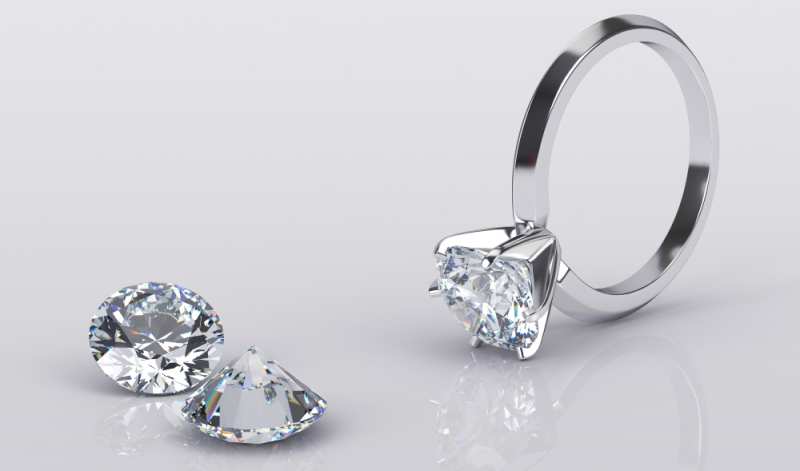
Final Word
If you’re wondering why your diamond keeps becoming loose, here’s a final breakdown:
There are multiple factors that can cause your diamond to become loose and potentially fall out. This includes damage to the ring setting or the diamond itself.
To check if your diamond is loose, you can tap it and listen for a rattling sound or gently push the stone to see if it moves or spins.
If you suspect your diamond is loose, it’s important to have it examined and repaired by a professional jeweler. They will be able to provide a thorough inspection and make the necessary repairs to secure your diamond back in place.


